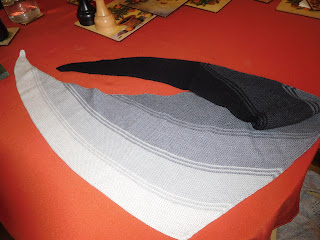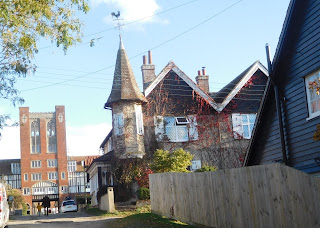On Saturday we took a trip over the fells to Caldbeck, a little village to the back of Skiddaw - miles from anywhere. We enjoyed lunch at the Watermill Cafe and strolled back to the car along the banks of the river, looking out for the dipper, which we were pleased to see doing its thing mid-stream.
Caldbeck is full of pretty stone-built cottages and a sense of prosperity. There is a large church with the grave of John Peel, the huntsman, and several thriving eateries. It could hardly be more different in tone to Maryport, the post-industrial coastal town where we have our cottage.
However, it was not always so. The river - Cold Beck - was once the source of power for a range of industries in the village - corn mills, a woollen mill, a paper mill, brewing and a bobbin mill. The fells around Caldbeck were a rich source of lead, silver, copper, tungsten and barytes - mining began in the 13th Century, reached its height in the 17th but did not end until the 1980s.
Just a short walk from the village centre with its tea-room, is The Howk, a gorge with several impressive ruined buildings, once a bobbin mill. Sixty men and boys were employed here, turning coppiced timber into bobbins for use in the Manchester cotton industry. It once had the largest water-wheel in England - three foot wide and forty-two foot in diameter.
It is a damp, shady gorge on a bright day. Among the workers, respiratory diseases from inhaling wood-dust would have been common; accidental fires as sparks caught the wood-shavings would also have cost lives. Hardly a rural idyll.
In the village, or near it, this substantial barn, with a nineteenth century date.
And in the evening, back to our chosen picnic spot on the Solway.


























































.JPG)